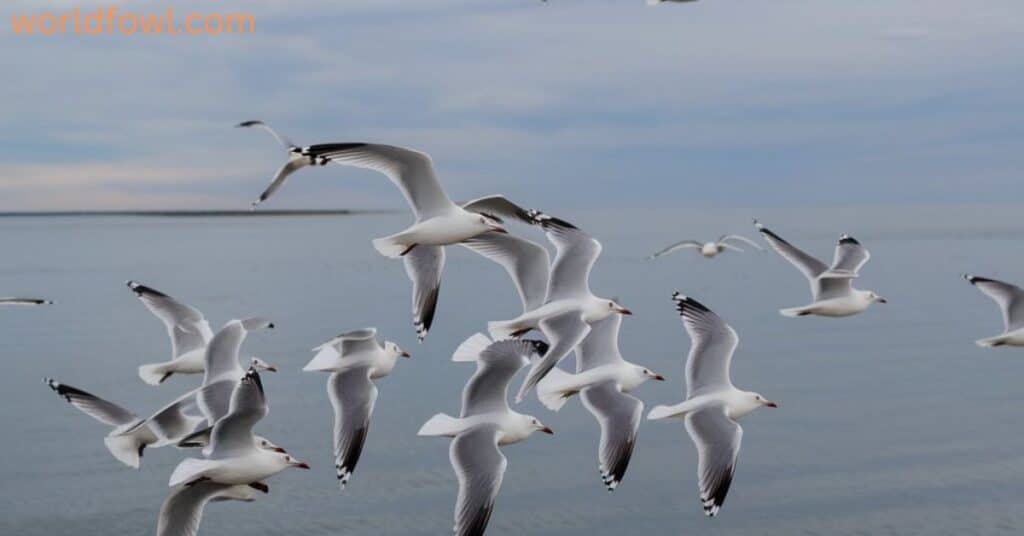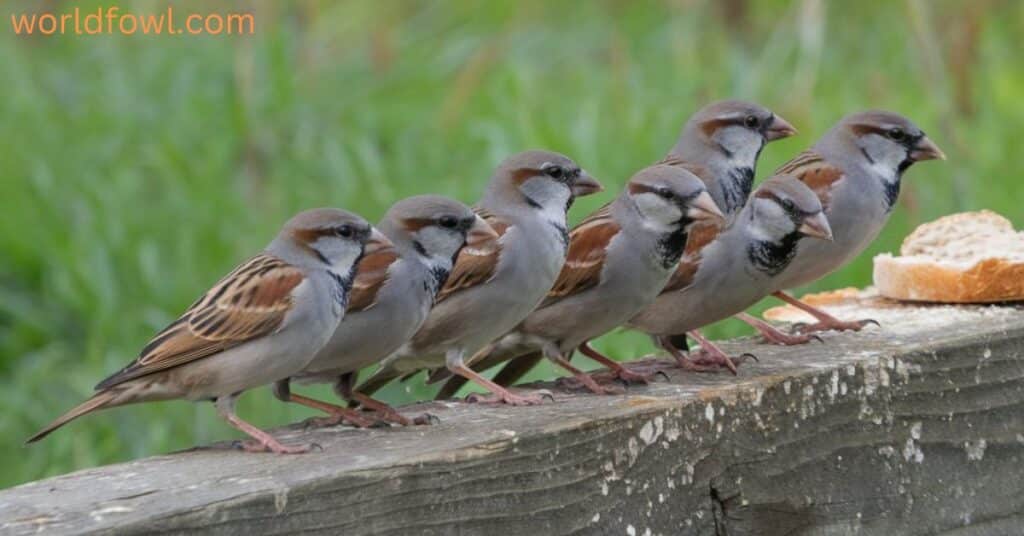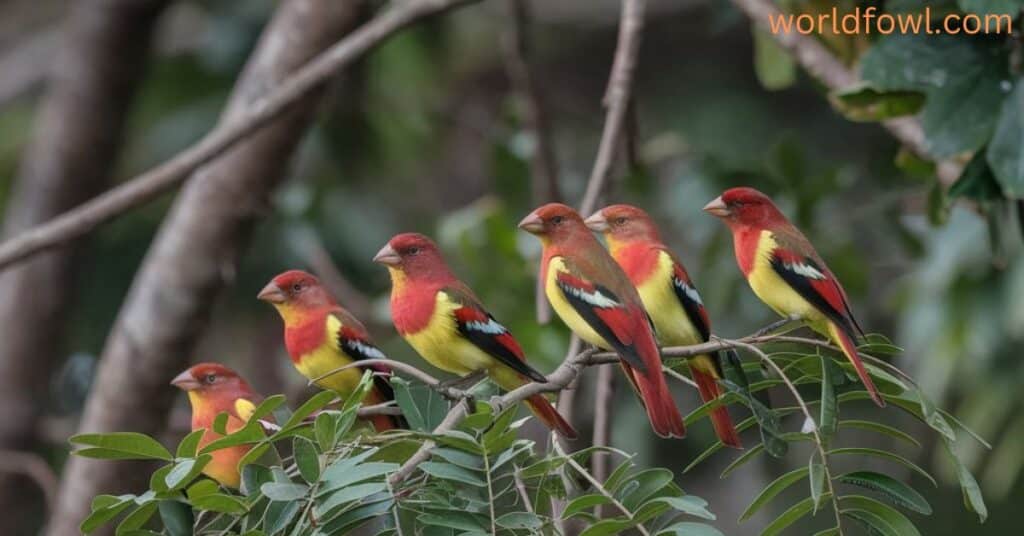Do Birds Eat Cicadas ? During the summer months, the air is filled with the familiar buzzing of cicadas, heralding their emergence. Cicadas, known for their rhythmic chorus and distinctive appearance, rise from the ground by the millions. These unique insects become an immediate and critical food source for many species in nature, especially birds. But just how significant are cicadas in the diet of birds? Do all birds eat cicadas? And why are they so irresistible to them? This guide will uncover the crunchy and delicious truth about the fascinating relationship between birds and cicadas.
Why Do Birds Eat Cicadas?

The answer is simple: cicadas are a protein-rich meal that provide a substantial source of nutrition. With their large, easy-to-catch bodies, birds find them to be a highly valuable food source, especially during times when they need energy the most—such as during breeding season, migration, or feeding their young.
Cicadas: A Seasonal Abundance
The periodic emergence of cicadas plays a significant role in why birds feast on them. Cicadas are not always available; they spend most of their lives underground as nymphs feeding on the sap from tree roots. When they finally surface—whether as annual cicadas or periodical cicadas—they appear in overwhelming numbers, often by the billions. This predictable, massive surge of cicadas provides opportunistic feeders with an almost limitless supply of food for a brief period.
you may also like : Small Black Bird With White Belly – 9 North American Birds
Cicadas as a Nutritional Powerhouse
The nutritional content of cicadas makes them a valuable target for birds. A cicada’s body is packed with protein, fat, and other essential nutrients, helping birds thrive during their summer predation of these insects. For birds preparing for migration, bulking up with protein-rich meals like cicadas is crucial. Below is a detailed breakdown of a cicada’s nutritional composition:
| Nutrient | Percentage |
| Protein | 55-60% |
| Fat | 20-25% |
| Carbohydrates | 10-15% |
| Water Content | 50-70% |
| Vitamins & Minerals | Trace |
Cicadas provide the perfect combination of protein and fat, helping birds build muscle, sustain their energy, and store fat reserves for long journeys or breeding.
The Role of Opportunistic Feeding
Many bird species are classified as opportunistic feeders, meaning they consume a wide variety of food sources depending on what’s available. When cicadas emerge in large numbers, birds that might not normally rely on insects as a staple food will eagerly eat cicadas due to their availability and nutritional value. This adaptability allows birds to make the most of food sources when they are in abundance.
What Birds Eat Cicadas? – Key Bird Families That Feast on Cicadas
Birds of all shapes and sizes hunt cicadas when they become available. Let’s explore which bird families are known for their cicada-eating habits and the methods they use to catch these noisy, flying insects.
Corvid Family (Crows, Ravens, Jays, and Magpies)

The corvid family—which includes crows, ravens, jays, and magpies—are some of the most intelligent birds in the animal kingdom. These large, clever birds are expert opportunistic feeders, taking full advantage of cicada emergences to gather a high-nutrient food supply. Corvids are omnivorous, meaning they consume both plant and animal matter, and their ability to thrive in a wide range of environments makes them highly effective hunters.
Corvid Hunting Behavior
Crows and ravens are often seen walking on the ground or perched on trees, waiting for a cicada to make its move. They use their sharp beaks to pluck cicadas from branches or catch them in flight. Their intelligence also allows them to develop strategies for finding cicadas in less obvious places, such as prying them out from the bark of trees or catching them after they’ve been stunned by hitting windows or other obstacles.
Crows and Cicada Emergence
During large-scale periodical cicada emergences, such as the famous 17-year Brood X cicada events in North America, corvid populations have been observed to thrive, gaining weight quickly from the rich food source. Studies have even shown that corvids may remember the timing of cicada emergences, adjusting their feeding strategies accordingly.
you might also like : Are Puffins Endangered – Revealing The Fate Of 3 Puffins
Cuckoos

They are well-known for their brood parasitism (laying their eggs in other birds’ nests), but they are also specialized insectivores. Cuckoos prefer soft-bodied insects like caterpillars, but when cicadas emerge, they eagerly add them to their diets. Their slender, long bodies make them nimble hunters, and they are particularly adept at catching cicada nymphs just after they emerge from the ground.
Falcons

Falcons are birds of prey known for their speed and precision. While they often hunt smaller birds, they won’t hesitate to catch a cicada in mid-air if the opportunity presents itself. Falcons are powerful hunters and rely on their keen eyesight to spot cicadas in flight. Once spotted, they use their impressive speed to snatch the insect from the sky.
Aerial Hunting Techniques
Falcons are some of the most specialized aerial insectivores, meaning they catch insects, like cicadas, while flying. Their sharp talons and hooked beaks are perfect for grabbing and devouring cicadas while still in flight. This predatory skill makes falcons one of the most formidable cicada predators in the air.
Flycatchers

As their name implies, flycatchers specialize in catching flying insects. During a cicada emergence, these agile birds dart through the air, snapping up cicadas with great efficiency. Flycatchers tend to hunt near wooded areas where cicadas are most common. Their quick, acrobatic flight patterns allow them to snatch cicadas out of the air with minimal effort.
you may also like : How To Clean A Bird Bath – Safe Bird Bath Cleaning Explained
Gulls

They are typically associated with coastal environments, but they are highly adaptable opportunistic feeders that can thrive in a variety of habitats. Gulls will readily consume cicadas, especially when the insects are abundant near bodies of water or urban areas. They are often seen snatching cicadas off the ground or catching them mid-air.
Hawks

Hawks, particularly smaller species like the Cooper’s Hawk, are known to consume cicadas during cicada emergence events. While hawks typically feed on small mammals and other birds, cicadas offer an easy and accessible meal when they emerge in large numbers. Their sharp talons and excellent vision make them effective hunters of these noisy insects.
Herons and Egrets

Though herons and egrets are primarily associated with aquatic habitats, they are opportunistic feeders that will consume cicadas when the insects emerge in large numbers. These birds are typically found near wetlands, rivers, and lakes, but they can also hunt cicadas in nearby grasslands or woodlands where the insects are abundant.
Nightjars and Goatsuckers

Nightjars and goatsuckers are nocturnal insectivores, meaning they primarily hunt at night. Their wide mouths and excellent night vision make them ideal hunters of cicadas. Nightjars tend to catch cicadas during twilight or nighttime hours when these insects are less active, giving the birds a chance to feed without competition from diurnal predators.
Silent Hunters of the Night
Nightjars have developed silent flight, allowing them to swoop down on unsuspecting cicadas without being detected. Their ability to blend into their surroundings makes them highly effective at catching cicadas that may be resting on branches or leaves.
you might also like : Do Penguins Lay Eggs? A Look At Penguin Reproduction
Sparrows

Though sparrows are small in size, they are capable predators of cicadas. These birds are ubiquitous in urban and rural areas alike, and their diet consists largely of seeds and insects. During cicada emergence periods, sparrows take advantage of the insects’ abundance, often catching them on the ground or plucking them from trees and shrubs.
Swallows

Swallows are another group of aerial insectivores that excel at catching flying insects. Their streamlined bodies and long wings allow them to glide through the air with ease, snatching cicadas as they fly. During a cicada emergence, swallows can often be seen in large flocks, circling in the air to capture as many cicadas as possible.
Tanagers

Brightly colored tanagers are known for their varied diets, which include fruit, seeds, and insects. During the summer months, tanagers will add cicadas to their diet, especially when the insects are in abundance. Their bright colors and quick movements make them a lively sight during a cicada feast.
Woodpeckers

Woodpeckers are known for their strong beaks and ability to drill into trees in search of insects. While they primarily feed on insects like beetles and ants, woodpeckers will also hunt cicadas, particularly when they are hiding beneath tree bark. Their strong beaks allow them to break through bark and access cicada nymphs before they emerge.
Do All Birds Eat Cicadas?
Not all birds eat cicadas, but the vast majority of bird species that have access to cicadas will consume them during the summer months when cicadas are abundant. The reason some birds may not eat cicadas depends on factors such as their size, habitat, and dietary preferences. Birds with specialized diets or birds that live in areas without cicadas will not consume them.
For example, many seed-eating birds, such as finches, may not target cicadas as much as insectivorous or omnivorous birds. However, because cicadas emerge in such large numbers, many birds that do not typically consume large insects will still eat cicadas when they are readily available.
you might also like : Are Blue Jays Mean – Revealing The Truth About Blue Jays
The Life Cycle of Cicadas
To fully understand the connection between birds and cicadas, it’s important to explore the life cycle of cicadas. The life cycle of a cicada is one of the most remarkable in the insect world. Cicadas fall into two main categories: annual cicadas, which appear every year, and periodical cicadas, which emerge on a 13- or 17-year cycle. Both types follow a similar life cycle, though periodical cicadas have much longer underground phases.
Cicada Nymphs: The Hidden Phase
The majority of a cicada’s life is spent underground as a nymph. After hatching from eggs laid in tree branches, cicada nymphs drop to the ground and burrow into the soil. Here, they feed on sap from tree roots and remain underground for several years. Annual cicadas spend about two to five years underground, while periodical cicadas stay hidden for 13 to 17 years.
Cicada Emergence: The Grand Event

When the time is right, cicada nymphs emerge from the ground, usually after a warm rain in late spring or early summer. They climb onto nearby trees or plants, where they molt into their adult form. This stage is when they are most vulnerable to predators, as they are slow-moving and unable to fly until their wings fully develop.
Adult Cicadas: A Short-Lived Life
Once fully grown, adult cicadas live for only a few weeks. During this time, they mate, lay eggs, and create the familiar buzzing sound we associate with summer. While adult cicadas are focused on reproduction, they become a prime target for birds and other predators. Their sheer numbers, however, help ensure the survival of their species.
The Importance of Cicadas in Bird Diets
Many birds, cicadas play an important role in their diet. During the short period when cicadas emerge, they become a primary food source for birds, providing a high-energy meal that helps birds maintain their health and energy. The predictable nature of cicada emergence allows birds to time their breeding and feeding patterns around this bounty.
Cicadas and Migratory Birds
For migratory birds, cicadas provide a valuable food source during their long journeys. Birds that travel hundreds or thousands of miles need to stock up on energy, and the abundance of protein-rich cicadas helps them prepare for their journey. Some bird species even time their migrations to coincide with cicada emergence, ensuring that they have access to this plentiful food source during critical periods.
While cicadas are a major food source for birds, they are not without their defenses. The vast numbers of cicadas that emerge all at once are part of a strategy known as predation pressure, where sheer numbers overwhelm predators like birds, ensuring that enough cicadas survive to reproduce. Additionally, cicadas have evolved physical defenses such as hard exoskeletons and camouflage that help them blend into their surroundings, making it harder for birds to spot them.
Although birds are among the primary predators of cicadas, they are not the only ones. Cicadas face a wide range of threats from other animals, including mammals, reptiles, and even other insects.
you may also like : Do Owls Come Out During The Day?
Mammals
Squirrels, raccoons, and even household pets like cats and dogs will eat cicadas. These mammals often take advantage of the insects when they fall to the ground or are stunned after flying into obstacles.
Reptiles and Amphibians
Lizards and snakes are also known to eat cicadas. In areas where cicadas are abundant, reptiles will readily consume them, making the most of this seasonal food source.
Insects
Interestingly, even some insects prey on cicadas. Predators like praying mantises and large spiders will capture cicadas when the opportunity arises. In some regions, cicadas are parasitized by the cicada killer wasp, a species of wasp that captures cicadas, paralyzes them, and drags them into underground burrows to feed their young.
Ecological Importance of Cicadas in Bird Predation
The relationship between birds and cicadas is a key element in maintaining the balance of ecosystems. Bird predation helps to control cicada populations, preventing them from becoming too abundant, which could lead to environmental imbalances. In turn, the large numbers of cicadas provide an essential food source for birds, supporting their populations during critical times of the year.
By feeding on cicadas, birds help regulate the population of this insect, ensuring that cicadas do not damage trees and plants by overfeeding. This predator-prey relationship is a perfect example of nature’s checks and balances, with both species benefiting from the interaction.
So, do birds eat cicadas? Absolutely—and with gusto. Cicadas provide a critical food source for a wide range of bird species, from tiny flycatchers to powerful hawks. Whether it’s catching them in flight or pulling them from tree bark, birds have evolved to make the most of cicada emergences, which occur predictably during the summer months.
Cicadas are not just a noisy nuisance; they play an important role in ecosystems as both a food source for birds and a predator-prey dynamic that helps keep nature in balance. The next time you hear that familiar buzzing, take a moment to appreciate the intricate relationships between these insects and the birds that depend on them.
Fun Fact:
During major periodical cicada emergences, the sheer number of cicadas can be so overwhelming that birds become “fat and happy,” often ignoring other food sources for weeks at a time. This mass availability of food allows bird populations to thrive, contributing to successful breeding seasons.
Did You Know?
Cicadas have been consumed by humans for thousands of years in various cultures. In fact, in some parts of the world, cicadas are considered a delicacy, much like they are for birds!

Henry James is a seasoned blogger and a passionate storyteller on “World Fowl.” With years of experience crafting engaging content, he brings a unique blend of expertise and creativity to his writing. Henry specializes in exploring diverse topics with depth and clarity, captivating readers worldwide.


